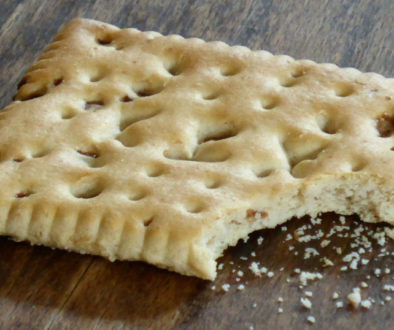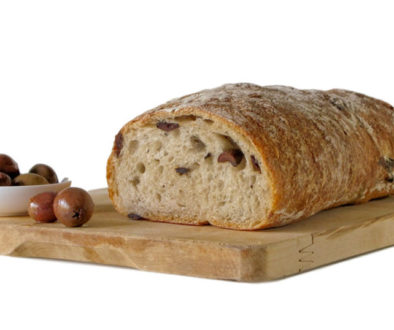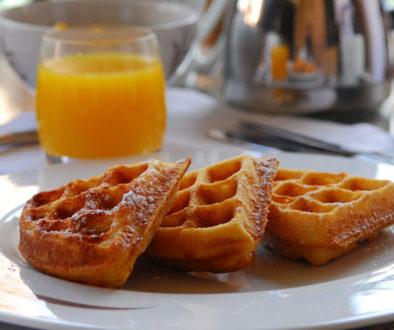Bits and Pieces of Information about Gluten-free Bread
[widget id=”ad_unit-350545263″]Ad Widget: Gluten Free – 468×60 Banner[/widget]Celiac disease, otherwise known as gluten intolerance, is an autoimmune disorder that affects millions of people worldwide. It is caused by the immune system’s reaction to gliadin, a gluten protein found in grains such as wheat, barley, and rye. This reaction causes an inflammatory response that damages the intestinal villi. Without functioning villi, a person can become malnourished. And since the only known effective and safe treatment for this condition is a lifelong gluten-free diet, celiac patients are always on the lookout for food products such as gluten-free bread to serve as an alternative to the traditional bread that we usually eat during breakfast.
For celiac sufferers, what can be more frustrating than start the day looking for a loaf of bread that does not contain gluten (given that most bread are made from wheat)? In the past, every day is a battle for celiac patients since most of the food products available for consumption in the market contain gluten. Today, however, the battle is almost over (at least for the breakfast part) as more and more bread manufacturers start to produce gluten-free bread which includes a procedure that removes gluten from the cereals at the time of manufacturing breads. Ener-G, Kinnikinnick, Glutino, Schar USA, and Three Bakers (formerly the Grainless Baker) are a few examples of companies that produce gluten-free bread.
Aside from the limited selection, celiac sufferers also have to deal with the high cost of gluten-free bread. But, what is it about gluten-free products that make them more expensive than the ones we’re used to having on the table every morning? When it comes to manufacturing gluten-free bread, cross contamination is a major issue. Gluten-free flours cannot be made in the same facility where wheat, rye, or any gluten-containing grains are milled because of the possibility of cross contamination even by airborne dust. Also, manufacturers that label their foods as gluten free should test their products at all stages of production. This also adds to production costs which, of course, are passed on to the consumers as evidenced by their high tag prices.
If you’re a celiac disease victim, the best way you can save on food is to stick to whole foods and avoid processed foods. When it comes to baked goodies, it is definitely cheaper to make your own. Knowing the qualities of the various gluten-free flours will really help you in deciding how to blend them. A lot of the known wheat alternative flours have amazing health benefits too. Just make sure they were milled and packaged in a gluten free environment.
If it’s your first time to make your own gluten-free bread, the following simple recipe is very apt for novice bakers just like you. Simply prepare the following ingredients: 1 cup rice flour (rice flour is an example of gluten-free flour), 1 1/2 tablespoons sugar, 1 1/2 teaspoons baking powder, 1/2 teaspoon salt, 1/2 cup milk, 1 egg, and 1/8 cup vegetable oil.
First, combine all the dry ingredients and mix evenly. Next, beat the egg lightly and add it on to the dry mixture. Add all the other remaining ingredients and mix them thoroughly for even distribution. Now, pour the batter into a greased small loaf tin. Place it on the oven and bake for approximately 20 minutes. Check with a skewer to make certain that the loaf is baked right through. Allow it to cool in the tin for 30 minutes. Once it has completely cooled, slice your gluten-free loaf and enjoy.
If you need more gluten-free bread recipes, there are many recipe books available in the market that can help you make hearty homemade breads in no time. Instead of researching on the Internet for hours and spending a lot of time in the kitchen making breads from scratch, you can just buy books that teach timesaving techniques in baking gluten-free products. Books such as Easy Gluten-Free Recipes (by Jane Ellis), Gluten Free Every Day Cookbook (by Robert Landolphi), You Won’t Believe It’s Gluten Free (by Robert Ryberg), 1000 Gluten-Free Recipes (by Carol Lee Fenster), and 100 Best Gluten-Free Recipes (by Carol Lee Fenster) are just five of the most top-selling gluten-free recipe books that you can buy.
Celiac disease is not as hard to deal with compared before because of the many gluten-free bread and other products made available in most supermarkets, grocery stores, specialty bakeshops, and online stores today. Now, even celiac sufferers can eat great-tasting bread without having to go far and spend a top dollar for a loaf of gluten-free bread.[widget id=”text-2″]Text: Shop the Gluten Free Mall 475×150[/widget]


